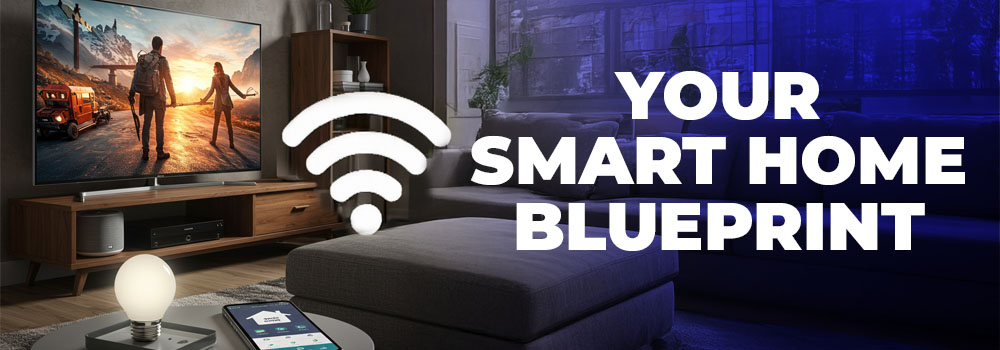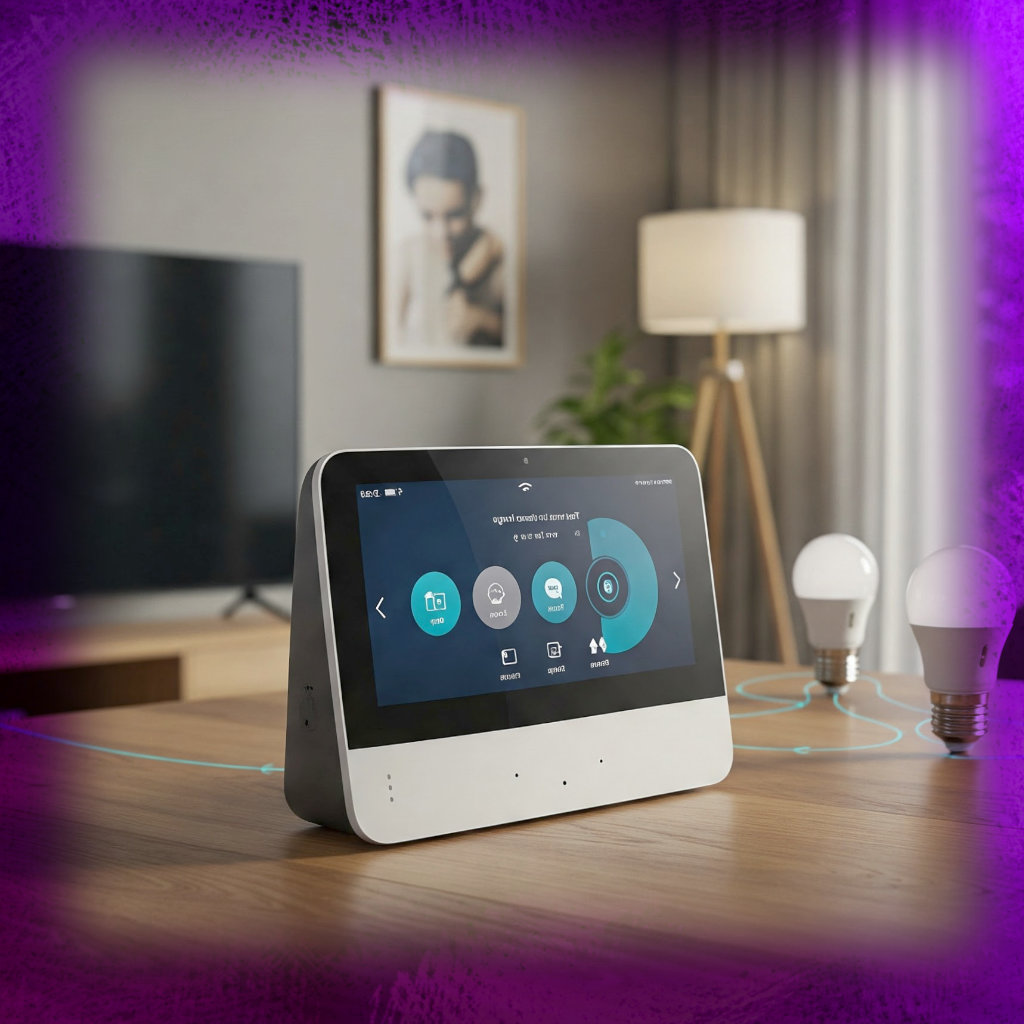Introduction: The Central Nervous System of Your Smart Home
In today’s connected world, the smart home hub has become the indispensable brain of modern home automation. No longer just a luxury for tech enthusiasts, these powerful devices now serve as the critical foundation for any serious smart home setup. The right hub transforms your collection of smart devices from isolated gadgets into a truly intelligent, responsive ecosystem that anticipates your needs and simplifies daily life.
Modern smart home hubs have evolved far beyond their early iterations as simple bridge devices. Today’s sophisticated models combine multiple wireless protocols, powerful local processing capabilities, and advanced automation features to create seamless smart home experiences. They serve four essential functions in your connected home:
- Unified Control Center: Acting as the single point of command for all your smart devices regardless of manufacturer or communication protocol
- Automation Engine: Enabling complex routines and scenarios that make your home truly responsive to your lifestyle
- Privacy Guardian: Providing local processing options to keep your data secure and reduce cloud dependence
- Future-Proof Investment: Supporting emerging standards to ensure compatibility with next-generation devices
This comprehensive guide will take you through every consideration for selecting, setting up, and optimizing your smart home hub to create a system that grows with your needs while protecting your privacy and security.
Understanding Smart Hub Architectures and Protocols
The Evolution of Home Automation Controllers
The smart home hub has undergone significant transformation since the first-generation models appeared in the early 2010s. Early devices like the original Wink Hub served primarily as simple protocol translators with limited capabilities. Today’s advanced hubs incorporate multiple sophisticated technologies:
- Multi-Protocol Radios: Modern hubs integrate Zigbee 3.0, Z-Wave 800, Thread, and Matter support in a single device
- Edge Computing: Local processing capabilities allow for faster response times and offline operation
- Machine Learning: Advanced hubs can analyze usage patterns to optimize automations over time
- Enterprise Security: Hardware-accelerated encryption and secure boot processes protect your smart home
Decoding Wireless Communication Standards
Understanding the various wireless protocols is essential for building a reliable smart home network. Each technology has distinct advantages and ideal use cases:
Zigbee 3.0: The Reliable Mesh Standard
- Operates on the globally available 2.4GHz band (with 915MHz option in the Americas)
- Typical range of 40-60 feet between nodes in a mesh configuration
- Supports massive networks of up to 65,000 devices
- Low latency of approximately 30ms for time-critical automations
- Excellent for sensors, lighting, and other low-bandwidth devices
Z-Wave 800: The Long-Range Specialist
- Uses sub-GHz frequencies (better wall penetration than 2.4GHz)
- 800 series offers twice the range of previous Z-Wave 700 devices
- Extremely power efficient – up to 4 years battery life for sensors
- More limited network size (232 devices maximum per hub)
- Ideal for security systems and battery-powered devices
Thread: The Next-Generation Protocol
- IP-based architecture allows direct internet communication
- Self-healing mesh network with no single point of failure
- Native compatibility with Matter standard
- Blazing-fast response times under 100ms
- Perfect for future-proofing your smart home
Selecting the Perfect Hub for Your Needs
Matching Hub Capabilities to User Profiles
Different users have varying technical expertise and smart home ambitions. Here’s how to match hub types to user profiles:
Casual Users (Basic automation needs)
- Recommended: Amazon Echo (4th Gen) or Google Nest Hub
- Advantages: Built-in voice control, easy setup, affordable
- Limitations: Limited advanced automation capabilities
Privacy-Conscious Users
- Recommended: Hubitat Elevation or Home Assistant
- Advantages: Complete local processing, no cloud dependence
- Considerations: Requires more technical knowledge
Apple Ecosystem Users
- Recommended: HomePod Mini (2nd Gen) or HomePod
- Advantages: Seamless Apple device integration
- Limitations: Primarily works best with HomeKit accessories
Power Users & Tinkerers
- Recommended: Home Assistant Yellow or Hubitat Elevation
- Advantages: Unlimited customization options
- Considerations: Steeper learning curve
Future-Focused Users
- Recommended: SmartThings Station or Aeotec Smart Hub
- Advantages: Early Matter support, upgrade path
- Considerations: Some features still in development
Hub Selection by Home Size and Layout
The physical characteristics of your home significantly impact hub selection:
Small Apartments (Under 800 sq ft)
- Recommended: Google Nest Hub (2nd Gen)
- Setup Notes: Typically requires no additional repeaters
- Ideal For: Basic lighting, plug, and voice control
Medium Homes (800-2,500 sq ft)
- Recommended: Aeotec Smart Home Hub
- Setup Notes: Plan for 2-3 Zigbee/Z-Wave repeaters
- Ideal For: Comprehensive lighting, security, and climate control
Large Homes (2,500+ sq ft)
- Recommended: Multi-hub setup (Hubitat + ConBee II)
- Setup Notes: Dedicated Thread border routers recommended
- Ideal For: Whole-home automation with multiple zones
Professional Installation and Optimization
Designing Your Smart Home Network Topology
A well-planned network architecture ensures reliable performance:
- Backbone Connection: Use Ethernet-wired hubs (PoE preferred) for critical infrastructure
- Primary Mesh Network: Zigbee/Z-Wave for sensors and low-bandwidth devices
- High-Bandwidth Layer: Wi-Fi 6E for cameras and media devices
- Future-Ready Layer: Thread network for Matter devices
Mitigating Wireless Interference
Common interference sources and solutions:
| Interference Source | Frequency | Mitigation Strategy |
|---|---|---|
| Microwave Ovens | 2.4GHz | Maintain 15+ foot separation |
| Baby Monitors | 900MHz | Upgrade to DECT technology |
| Bluetooth Devices | 2.4GHz | Schedule automations around peak usage times |
| Cordless Phones | Various | Replace with modern DECT 6.0 models |
Advanced Automation Strategies
Context-Aware Routines
Modern hubs enable intelligent automations that consider multiple factors:
Example “Good Night” Routine:
- Checks calendar for next-day commitments
- Adjusts wake-up alarm timing accordingly
- Sets thermostat based on weather forecast
- Activates appropriate security mode based on travel plans
- Gradually dims lights over 30 minutes
Predictive Lighting Systems
Using motion sensor data and machine learning to:
- Map household occupancy patterns
- Pre-illuminate frequently used pathways
- Automatically adjust color temperature throughout the day
- Learn and adapt to seasonal usage changes
Energy Optimization Features
Smart plugs with energy monitoring enable:
- Identification of phantom power drains
- Automated load shedding during peak rate periods
- Coordination with solar battery systems
- Detailed energy usage reporting
Security Best Practices
Network Segmentation Strategy
Recommended VLAN architecture for security:
- VLAN 10 – Management
- Hub control interfaces only
- Strictest access controls
- No internet access
- VLAN 20 – IoT Devices
- Restricted internet access
- Device isolation enabled
- Regular firmware updates
- VLAN 30 – Cameras
- Completely isolated from other networks
- Local recording only
- No cloud access
Encryption Standards
Minimum security requirements for smart hubs:
- TLS 1.3 for all cloud communications
- AES-256 encryption for local device communication
- Certificate-based authentication for hub access
- Regular security patch updates (automatic preferred)
Troubleshooting Methodology
Systematic approach to diagnosing issues:
- Physical Layer Verification
- Power cycle hub and affected devices
- Confirm radio status LEDs
- Check all cable connections
- Network Diagnostics
- Ping tests to hub IP address
- Wireless spectrum analysis
- Zigbee channel scan for interference
- Protocol-Specific Checks
- Z-Wave network healing procedure
- Zigbee route optimization
- Thread network partition detection
Future-Proofing Your Investment
Matter Standard Adoption Timeline
Understanding the rollout plan helps with purchasing decisions:
- Phase 1 (2023): Basic device types (lights, plugs, switches)
- Phase 2 (2024): Security systems, HVAC controls, window coverings
- Phase 3 (2025+): Major appliances, EV chargers, advanced sensors
Recommended Upgrade Path
Strategic approach to transitioning your system:
- Current Hub → Matter Controller upgrade
- Zigbee 3.0 devices → Matter-over-Thread transition
- Wi-Fi devices → Matter-over-WiFi migration
- Cloud-dependent devices → Local control alternatives
Comparative Hub Performance Analysis
Detailed comparison of leading hub options:
| Feature/Capability | SmartThings | Hubitat | Home Assistant |
|---|---|---|---|
| Local Execution | Partial (some cloud dependence) | Full local control | Complete local processing |
| Maximum Devices | 200 | 250 | Unlimited (hardware dependent) |
| Automation Complexity | Intermediate | Advanced | Expert-level |
| Initial Setup Time | 15-30 minutes | 45-60 minutes | 2+ hours |
| Voice Assistant Integration | Excellent | Good | Requires configuration |
| Privacy Controls | Standard | Excellent | Maximum customization |
Conclusion: Building Your Smart Home Foundation
Selecting the right smart home hub requires careful consideration of several key factors:
- Current Ecosystem: Compatibility with existing devices
- Technical Comfort: Willingness to tackle complex setups
- Privacy Requirements: Importance of local processing
- Future Plans: Anticipated smart home expansion
The ideal smart hub serves not just as a solution for today’s needs, but as a flexible platform that will grow and adapt with emerging technologies. By investing in a quality hub with proper protocols and local processing capabilities, you create a foundation that will support years of seamless automation and smart home evolution.
Remember that the most expensive option isn’t necessarily the best for your situation. Focus on finding the hub that matches your technical abilities while providing room to grow. With the right central controller in place, you’ll be well positioned to build a smart home that’s more than the sum of its parts – one that truly makes life easier, more secure, and more enjoyable.

